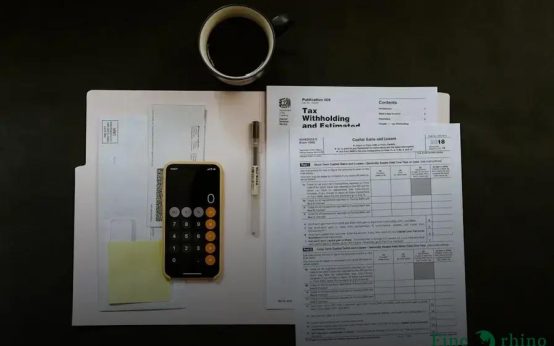Investing in rental properties can be a lucrative venture, but understanding how to calculate ROI is crucial for success. In this guide, we will explore what ROI means in the context of real estate and provide you with an easy step-by-step calculation process. You’ll also learn about the key factors that can affect your property’s ROI and discover tips on how to optimize your earnings. Let’s dive into the world of real estate investment and equip you with the knowledge to make informed decisions.
Understanding ROI in Rental Properties
Return on Investment (ROI) in rental properties is a crucial metric for any real estate investor. It helps in determining how effectively the property is generating profits compared to the cost invested. Calculating ROI involves understanding the total investment costs and the net profit from the rental property.
Investment costs include the purchase price, closing costs, renovation expenses, and ongoing maintenance costs. On the other hand, net profit is the total rental income minus operating expenses such as property management fees, repairs, insurance, and taxes.
To calculate ROI, you need to first determine your annual rental income. Subtract all annual expenses from this income to get your annual net profit. Then, divide the net profit by the total investment cost and multiply by 100 to get the percentage ROI.
ROI calculation helps investors assess the profitability of their investment and make informed decisions. By regularly calculating ROI, investors can identify when it’s time to raise rents, refinance, or even sell the property if it’s underperforming. This understanding is vital to maximizing your profit and ensuring stable financial growth.
Step-by-Step ROI Calculation

The step-by-step process of calculating ROI on a rental property can be quite straightforward once you understand the basic elements involved. ROI, or Return on Investment, measures the efficiency of an investment or compares the efficiency of several different investments. Calculating ROI involves several steps to ensure accuracy and a clear understanding of your property’s profitability.
Identify Total Investment Costs
The first step in calculating ROI is to determine your total investment costs. This includes the purchase price of the property, closing costs, and any initial repairs or renovations needed to make the property rentable. Be sure to also include any ongoing expenses, such as property taxes, insurance, and management fees.
Calculate Net Annual Income
Next, you need to calculate your net annual income from the rental property. This is done by subtracting your annual expenses (such as maintenance, property management fees, and tax payments) from your annual rental income. Make sure to take into account vacancy periods or unexpected expenses that could affect your actual income.
Determine ROI
Once you have your total costs and net income figures, calculating ROI is simple. Use the formula:
ROI = (Net Income / Total Investment Costs) x 100
This will give you a percentage that represents how much return you are making on your investment in relation to its cost.
Analyze ROI Results
Interpreting the ROI percentage is crucial for making informed decisions. A higher ROI indicates a more profitable investment. Compare the ROI of your property to average market values and other investment opportunities to assess its performance. Remember, factors like location, property condition, and market trends can influence the ROI.
Factors Affecting ROI
Several key factors can significantly impact the ROI (Return on Investment) of a rental property. Understanding these elements helps property investors make informed decisions and enhance their returns.
Location
Location is one of the most crucial factors affecting ROI. Properties in areas with high demand, proximity to amenities, and strong economic growth are likely to yield better returns. Consider regional growth trends, local employment rates, and neighborhood developments when assessing potential properties.
Property Management
Efficient property management can enhance the profitability of rental properties. A professional management team can ensure low vacancy rates, timely rent collection, and property upkeep, directly impacting the ROI.
Maintenance and Upkeep Costs
The expenses related to property maintenance and repairs also influence ROI. It’s important to assess the condition of the property before purchase and plan for ongoing maintenance to avoid unexpected costs that could eat away at profits.
Market Conditions The real estate market is dynamic, and shifts in market conditions can affect ROI. Economic downturns, fluctuating interest rates, and changes in real estate policies can all influence property value and rental income.
Tenant Quality
Tenant quality affects ROI as well. Reliable tenants who pay rent on time and take care of the property help maintain a steady cash flow and reduce turnover costs.
By considering these factors, investors can better strategize to optimize the ROI on their rental properties, ensuring long-term financial success.
Tips to Improve Your Rental Property ROI

The first step to enhancing your rental property’s ROI is understanding your target market. Tailor your property to meet the specific needs and preferences of potential tenants. This could mean adding popular amenities or improving the property’s location value, such as proximity to public transport or local amenities.
Another key factor is effective property management. Keeping the property well-maintained can help reduce vacancy rates and attract higher-quality tenants. Regularly update appliances and fixtures to keep your property attractive. Additionally, ensure you have a thorough tenant screening process in place to find reliable tenants.
Consider making energy-efficient upgrades to attract environmentally-conscious tenants and reduce utility costs. Installing solar panels or energy-efficient windows can not only increase ROI through tenant savings but can also qualify you for tax incentives.
Market your property effectively by using online platforms and high-quality photos to attract potential renters. Customize your marketing strategies to highlight what makes your property unique, be it a modern kitchen, spacious backyard, or a quiet neighborhood.
Finally, review your rental pricing strategy regularly. Assess market trends and adjust your rent prices to remain competitive without undervaluing your property. This involves a fine balance of keeping rents attractive to potential tenants while maximizing your income.





